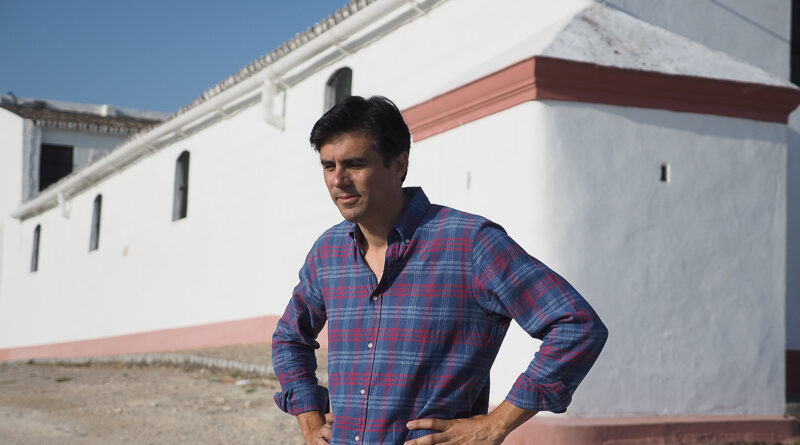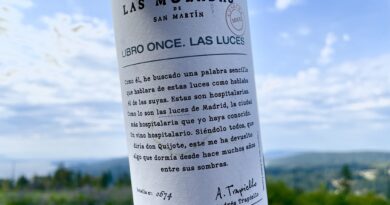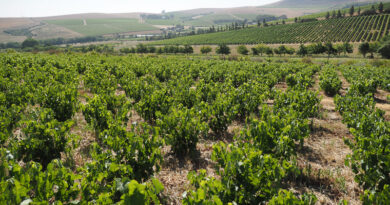Recovering the magic of El Marco: back to the sherry vineyards, and old ways of making wines
Jamie Goode visits Bodegas Luiz Perez, and meets Willy Perez, who is on a mission to recover the great sherries of the past, when the region was vineyard and not process-focused.
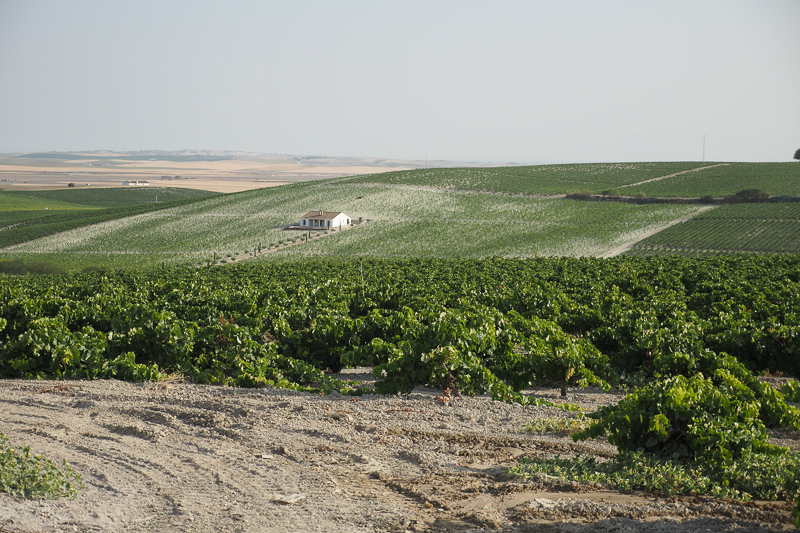
I meet Willy Perez on a gorgeous July morning. We’re in the Carrascal pago (the term used to refer to specific vineyards), and the sunlight reflects back off the white soil creating an almost heavenly glare. Willy, 38, is one of the leading figures in Sherry’s fine wine revival. He picks up a rock from the ground and begins a short demonstration of the soil types.
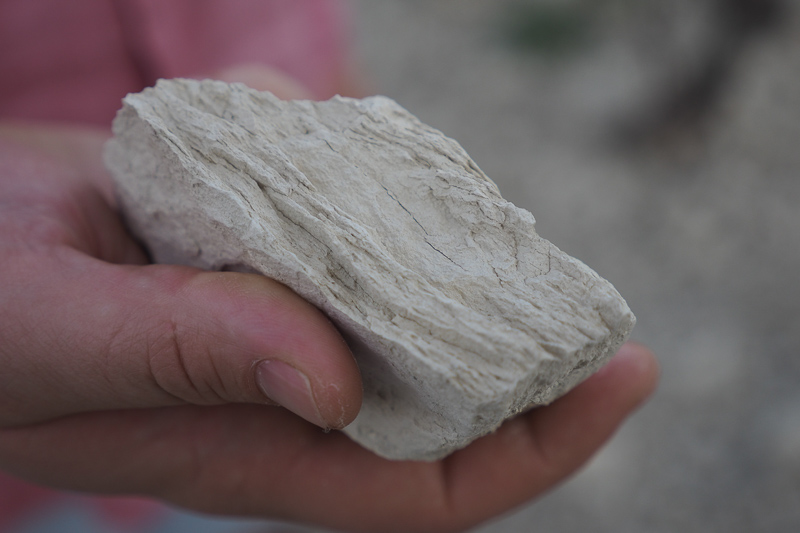
‘In the 19th century, all the wines were classified by the type of soil,’ he says. ‘They had nine different types of soil, three albariza, then three of clay and three of sand.’ This will be news to anyone who has studied Sherry in their wine education classes. He holds up a white rock. It’s much lighter than you’d expect it to be. ‘This is albariza de Barajuelas,’ he explains. It looks layered, like a deck of cards, and makes up 20% of the first vineyard block we are looking at, Tosca (the other 80% of the soils are Tosca Cerradas, not the Barajuelas).
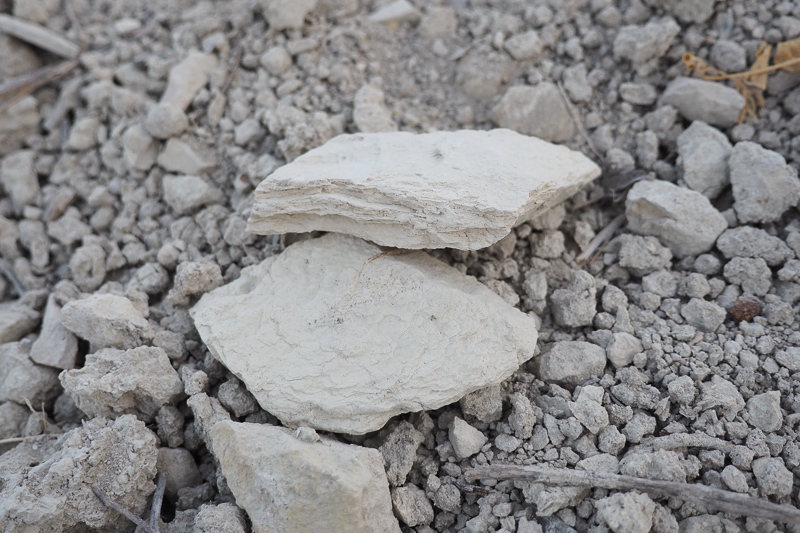
‘The main thing with albariza is it is formed from diatoms, and it is filled with air,’ he explains. ‘50 million years ago Spain ended at the top of Cordoba. Andalucia didn’t exist. It emerged from the oceans and you have an island in the middle: all the mountains of Cadiz and Granada. There were two stretches, north and south. The sunlight and organic material create good conditions for the diatoms to live in, adding a milimetre every 100 years.’ So in the regions, the lower vineyards are clay, in the middle of the slopes there is albariza with clay, and then there is pure albariza at the top of the hills. ‘The altitude is important for the purity of the albariza,’ says Willy. This is why his friend, Ramiro Ibanez, has labelled his Sanlucar winery Cota 45, because this is the altitude in metres where he thinks things get interesting.
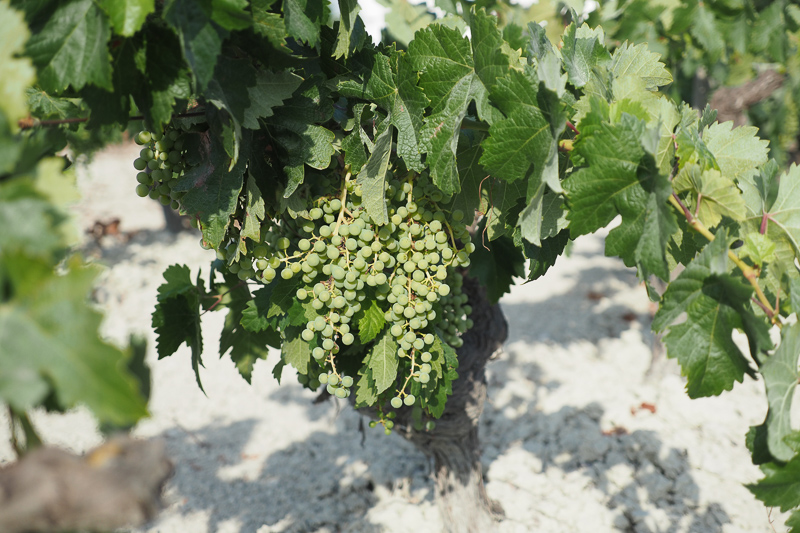
Then he shows us another, a little softer, called Lentejuela, which is a sedimentary soil with more limestone. It looks beautiful. These are proper vineyard soils.
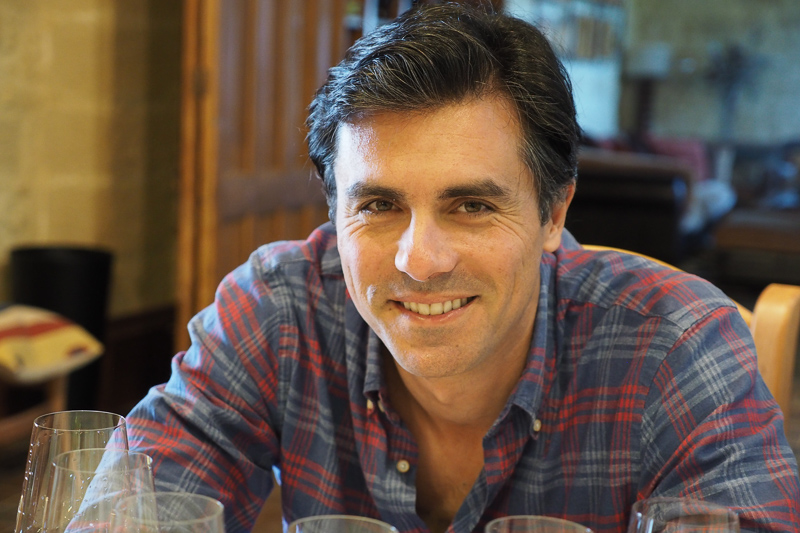
Willy Perez is one of a small group of winegrowers looking to revive Sherry as a fine wine, based on the vineyard, not the winemaking process. ‘The pago system was very important in the past,’ he says. ‘It’s not right now: everyone is blending grapes in the cooperatives.’
‘The inventory of a winery was done by soil type. A ten-year-old wine from sand was cheaper than an albariza of just one year.’ He adds, ‘What I am trying to say is that soil used to be very important, more than ageing.’
Bodegas Luis Perez
Willy is the son of Luis Pérez Rodriguez, professor of oenology at Cadiz University and former chief wine maker at Domecq. In 2002 he started his own winery, Bodegas Luis Pérez, with a focus on making red wines. They grow Merlot, Syrah and Petit Verdot on marl and gypsum soils at their Vistahermosa farm, and more recently added local grape Tintilla de Rota. But it’s their new sherry project that’s of most interest.
‘We started making red wine here,’ says Willy. ‘There was none in Andalucia. I moved to Australia looking to understand hot climate Syrah. When I came back I was curious about Sherry, so I started researching with Ramiro Ibanez.’
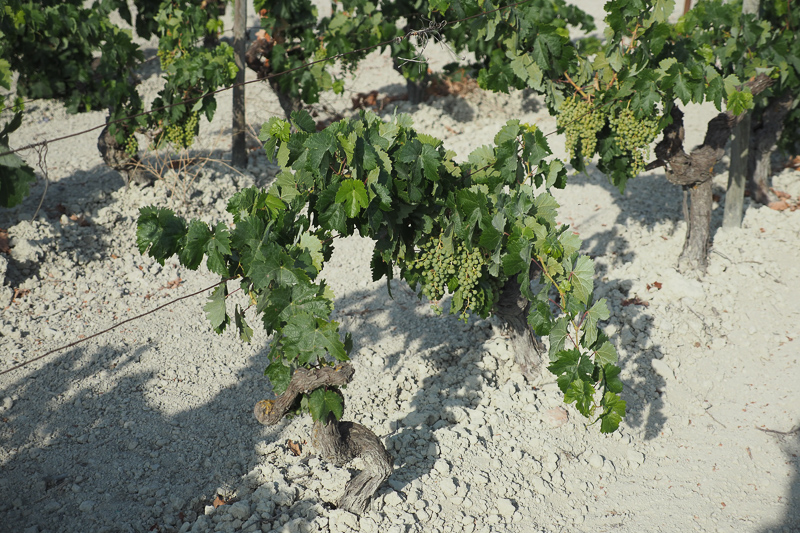
In 2013 they purchased the El Corregidor vineyard within Carrascal pago, and began work on making premium Sherries based on ancient methods. The inspiration for this came from Willy’s encounter with old books. ‘We realized that Sherry wasn’t what we learned in the past.’ One of the books that left a mark on him was James Busby’s 1834 classic Journal of a Tour through some of the Vineyards of Spain and France. Busby, who was instrumental in kicking off the Australian wine industry, visited Jerez in 1831. ‘My father recovered this book from Osborne. [Busby] met Pedro Domecq, the master of Sherry.’ It is clear from this that Sherry was a vineyard wine, then, and not what it is today. ‘Pedro spent 90% of the interview talking about the vineyard: soils and slopes. And just 10% on the vinification and ageing. I was really shocked: if the main guy – Sherry’s Dom Perignon – was talking about vineyards and soils, then all that I learned was wrong.’
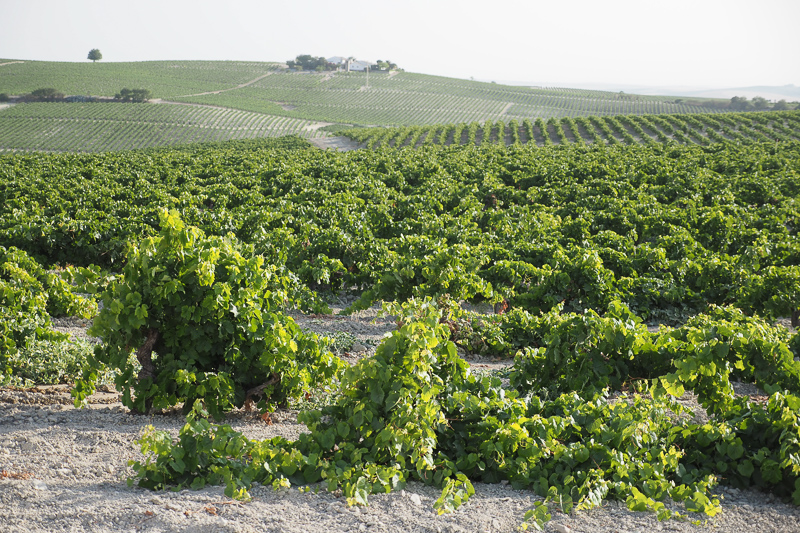
How things went wrong
‘Until 1971 we were working with the pago system,’ says Willy. ‘Because Spain was entering the European Union, some clever guy says that we needed three times the wine, so we planted with a new clone, Palomino California. In the 1970s yields were 5 tons per hectare and then they grew to 15 tons/hectare in just three years.’ Coupled with an expansion of the vineyard area, suddenly it was the era of Big Sherry. ‘It was messing up sherry as we knew it. Before, you could easily reach 15% alcohol naturally. With the new clone and high yields, this is very difficult. You need a balance between the leaves and the weight of grapes, and in that moment it was all messed up.’
A decade later, the market for sherry collapsed, when the region was larger and more productive than it had every been. ‘In 1979 1 million cases of Bristol Harvest Cream was sent to the UK,’ says Willy. Then in 1981 the market collapsed, just as it had done in 1865 and 1778. ‘All three times, the reflection was that we needed to come back to the vineyard.’
‘In the past, all the system of pagos, sub pagos and vineyards were described in the middle of the 19th century with a lot of maps and classification of soils. Jerez was in the same classification as Champagne and Bordeaux in the system of soils, but we lost it 40 or 50 years ago and it’s a pity.’
Since the 1980s, the bodegas have paid just by weight of grapes. ‘But 150 years ago they paid by soil type,’ says Willy. ‘They started to say that the grape is not important in Jerez but it is all about the winery. This has been the case for the last 40 years.’ Certainly, it’s quite common to see textbooks saying that Palomino makes neutral wines, that then are transformed into sherry through the distinctive ageing process in the region. Willy’s mission – which he shares with several likeminded growers – is to bring the attention back to the vineyard.
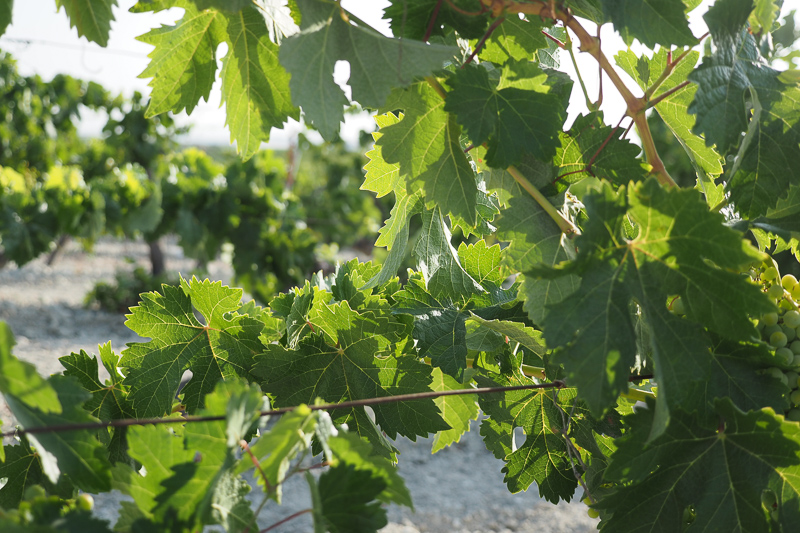
The solution: how the new Sherries are made at Bodegas Luis Perez
As we stand in Carrascal, we are 20 km from the Atlantic ocean. This is one of the key factors in the terroir of the vineyards of El Marco (the term that refers to the vineyard area that takes in Jerez, Sanlucar and El Puerto). ‘In the past they divided all the pagos according to the soil and the situation,’ says Willy. ‘The closer you are to the Atlantic ocean, the cooler the climate you have. The wines are fresher, with less alcohol and more acidity.’
‘Here [the wines] have more center of the mouth, more volume and you can age the wine better. In the coast there is less altitude, you are moving from 45-60 m. Here, you can find the highest point, which is 136 m. Our most famous vineyard, the Romanee Conti [of El Marco], is El Castillo de Majuela, that tower, from Fundador. It is the origin where modern sherry was invented.’
He explains that the soils were classified into nine groups:
- Three of albariza
- Three of clay
- Three of sand
Luis Perez’ plot in Carrascal consists of 30 hectares of 50 year old vines. ‘It is hard to find a large, old vineyard in Jerez,’ says Willy. ‘We were looking for a vineyard with low yields to recover the process of the old sherries, giving 3-4 tons/hectare. We are trying to recover the sherries of the 19th Century and it is important to have low yields to give concentrated sherries. We are trying to recover sherries as white wines, with the fruit and the centre of the mouth.’
He says that modern sherries are typically felt on the point of the tongue and then the throat. ‘But you never have it in the centre of the mouth,’ he says. ‘Only with the really old sherries. We are trying to recover the fruit in the middle, then the salinity, and then the bitterness in the throat – if you open sherries of the 1940s and 50s all of them are really big and they reach 15% alcohol naturally.’
And it’s interesting to note that until the 1960s, the high-class sherries were not fortified. It was just low-price sherries, and sherries that were meant for export. ‘I don’t fortify the wines,’ he says. Instead, he does two things that are quite different. First of all, he practices the old system of harvesting in tranches, and second, he uses a rediscovered process called asoleo.
‘We use the old system of harvesting in Jerez. We pick one crop every time,’ he says. ‘The last harvest took 61 days, and we made 14-15 passes through the vineyard, picking depending on the ripeness.’
The grapes are harvested in a unit called a carretada, which is 690 kg. This is the amount a person could harvest in one day, which is 60 of the wicker grape harvesting baskets. It also fills one of the wooden lagares in the winery, and when pressed, fills a single cask.
‘Every Carretada we select different ripeness,’ he says.
There are five different pickings:
- The first is green grapes, used to correct acidity
- The second is for white wine
- The third is for fino
- The fourth is for Oloroso
- The fifth is for Raya, an old classification for sherry
‘In the 19th century, everything was decided by the ripeness of the grapes,’ he says. ‘There were 43 different varieties at that time, so our universe was big in diversity. We lost this diversity with phylloxera, keeping just three varieties. [In the past] Olorosos were made with at least six different varieties.’
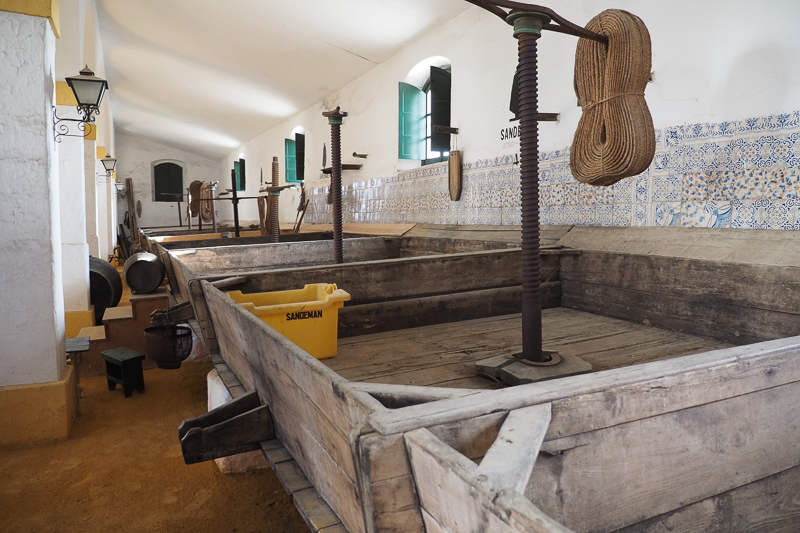
The press workers were called pisadores, and they wore boots called the Zapato de pisar, which have wooden soles with nails in them (this is quite different from the Douro, where foot treading was and still is barefoot). It was common to add 1-2 kg of gypsum per 690 kg to acidify the must a little. Willy explains the way the pressing process worked (and he’s doing this today, in a recreation of the old way of doing things):
One carretada Is 690 kg. Or 60 baskets of grapes.
The lagar is three metres by thee metres, and it’s the perfect size for one carretada. Four people tread the grapes, working in the same direction. As the grapes are pressed, they are piled up again and pressed again, in one corner of the lagar. Then this is repeated. This is called the first pressing, or the Yemas. The second pressing involves taking all the skins and building a cylinder in the middle of the lagar. A flat wicker rope called an empleita is then wrapped around this cylinder, and more grapes are added. Gradually, a rope-enclosed cylinder of grapes grows in the centre of the lagar, around the screw of the press. When it is finished, two pieces of wood are placed at the top, and the screw of the press is turned, releasing must through the empleita. With the Yemas and the second press (Prensa), there is enough to fill a cask. There is a third press: some water is added and a second pie is
formed, and this is called Aguapiés, but this quality never used to go into the cask, it was just for the workers consumption).
Traditionally, all the wines were fermented in the vineyard. ‘In the 1960s and 1970s, we needed to build big new wineries in the centre of town,’ says Willy. ‘At that moment you couldn’t separate Balbaina from Marchanudo from Carrascal. The pressings were very big, and you needed to blend all the soleras with different pagos. Initially, all the wine had been fermented in the vineyard. The winemaker came to the vineyard to taste the wine directly in every vineyard.’
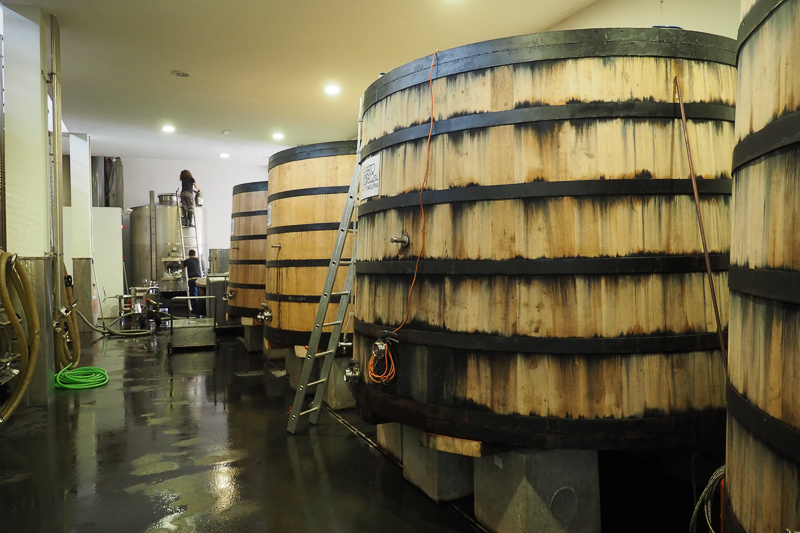
The asoleo is a method that died, but which he has recovered. It involves laying the grapes out on circular mats for a few hours. ‘Until 1969, all the grapes needed to be asoleo under the sun at least 7 hours for concentration, to avoid fortification.’ He adds, ‘If you need one degree of alcohol you need one day of asoleo. That is why we always reached 15% naturally. In 1971, the advertisement of [Domecq) Fino La Ina was outdoor asoleo.’
‘I was born here and I never heard of this. Everyone forgot about it. My father started to work with sherry in 1974 with Domecq didn’t know about asoleo. I learned this through books.’
Then when it comes to vinification, he fills the casks a bit higher to have less surface of the crianza biologica. This eats alcohol and glycerine, and lightens the wine. So in a cool year, he wants less of it. ‘Velo [flor] is make up,’ he says. ‘When you have high yields you add the flavour with the flor. If you want to preserve your pago taste, if you have too much alcohol or flor you will lose it.’
Technically, for a wine to be a Sherry, until recently it needed to have some alcohol added, even though in the past this wasn’t the case. However, the rules have been under revision and now these wines, which Willy labels as regional or table wines, are able to be called Sherry.
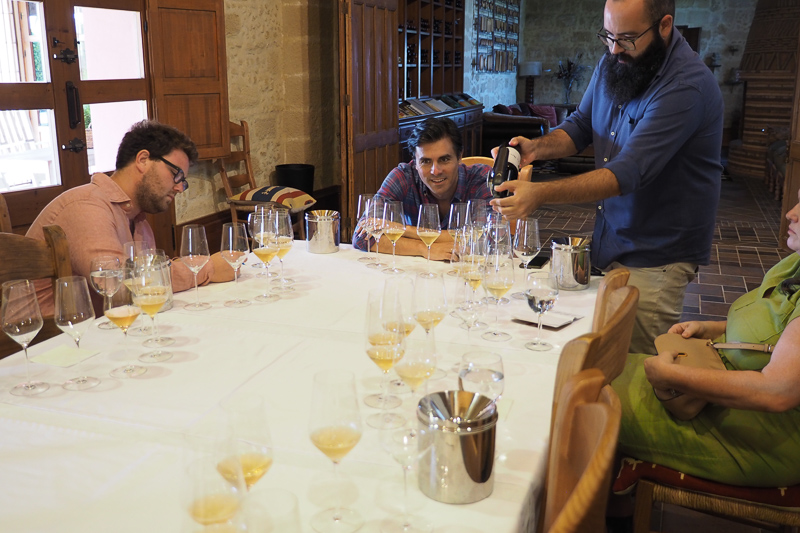
THE WINES
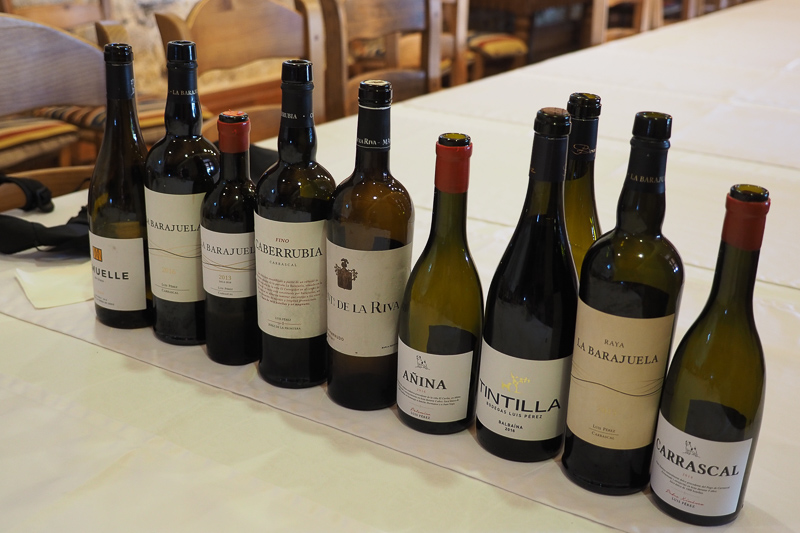
Luis Perez El Muelle de Olaso 2018 Vino de la Tierra de Cadiz
13.5% alcohol. Palomino Fino with a small amount of flor. 75% in tank, 25% in Sherry casks. Rich, complex and a little saline with some fine toast and spice notes. Shows pear and fennel with subtle flor influence and also notes of fennel and spice. Complex and rich, but has some focus too. Very fine. 94/100 (available from The Sorting Table – I declare an interest here, but this note and score predate my involvement)
Luis Perez La Barajuela Carrascal 2016 Vino Bianco
From albariza de Barajuelas. 15% alcohol. Some green Palomino is added to preserve the acidity, and the wine is matured for 2 years in crianza biologica, naturally made. Yellow/gold in colour. Powerful with lovely crystalline citrus fruit and some flor character. Shows nuts and fine herbs with a touch of porcini mushroom and a bit of saltiness. Very rich but fresh, too. 96/100
Luis Perez La Barajuela Saca Carrascal 2016 Vino Bianco
This is aged for five years in crianza biologica, and is a dos palmas, almost an amontillado. So tangy and salty. Has great precision. Linear with lovely citrus mid palate. Intense and concentrated but still so fresh with attractive citrus fruit and some pear. Precise, fine and salty, with a beginning, a middle and an end. Thrilling. 97/100
Luis Perez Fino Caberrubia Carrascal NV Jerez
This is an entry-level Sherry made by blending casks with four years’ ageing. 16% alcohol. Nutty, waxy nose with herbs, ripe apples and citrus. It’s rounded and smooth with some sweet notes. Ripe citrus and pear fruit. Harmonious with a lovely saline finish. 93/100
Manto. De La Riva Macharnudo ‘La Riva’ 2017 Vino Blanco
This is from El Majuelo, a high part of this famous pago that’s owned by Harvey’s. This wine is a collaboration with Ramiro Ibanez. It’s dry, fresh and a bit waxy with subtle saline notes. Great precision with hints of earth and stone, showing nice freshness. Textured and fine with lovely harmony. Amazing. 95/100
Luis Perez Añina 2016 Vino Blanco
Palomino from part of the El Caribe vineyard, Pago de Añina. The fermentation took four months, and this is sort of a blend of a white wine with an oloroso. Complex with an intense nose of peach, toast, raisins and spice. Rich, textural palate is rounded with spice, raisins, nuts and some saline quality. It has an eternal finish with some dried fruit and spice. Intense and long. 95/100
Luis Perez Tintilla Balbaina 2017 Vino de la Tierra de Cadiz
12.5% alcohol. Made from the Tintilla de Rota variety, grown in Balbaina, the closest pago to the Atlantic ocean. This is a really spicy grape with high acidity. 10% green Palomino in the blend. Smooth and very textural with sweet supple red cherries and raspberries. Very smooth with supple fruit and a really harmonious palate. Ripe but smooth with amazing tannins. 94/100
Luis Perez Raya La Barajuela 2015 Vino de la Tierra de Cadiz
Raya is an old category of grapes picked ripe (17% natural alcohol), which used to be the base wine for cream sherries. After fermentation, there are a few grams of residual sugar. In the second year there is a refermentation that is not a perfect fermentation in that it involves bacteria as well as yeasts. The result is a really salty wine that’s complex, rich and tangy with good acidity and some cherry hints. There’s a hint of sweetness, and it is quite powerful, with a smooth mid-palate. 94/100
Luis Perez Carrascal Pedro Ximénez 2014 Vino Blanco
14.5% alcohol. This is an unfortified wine that spends 10-12 days doing asoleo. The grapes reached 450g/l sugar, and then fermented leaving 100 g/l sugar. Sweetly aromatic. Rich and raisiny but with fresh grapey notes and a hint of marmalade. So lovely, with incredible precision. 94/100
Find these wines with wine-searcher.com
UK agent: Indigo Wines

